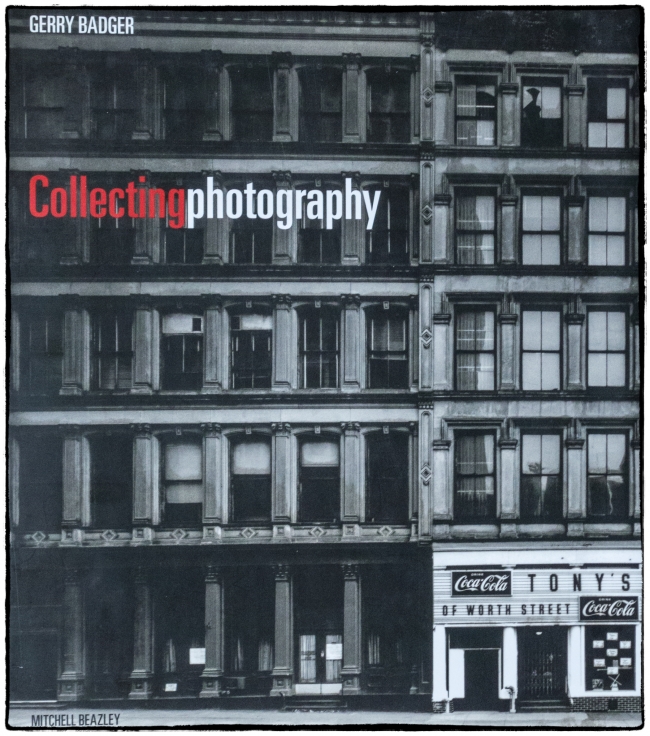I’ve been thinking of starting collection of photographs for a while, but I didn’t really know where to start. So I picked up this book: Collecting Photography by Gerry Badger, second hand – cost about $8.00. It’s a nice hardback book in pretty good condition and I found it very useful.
The book is divided into two parts: the first part contains the introduction and five chapters dealing with the following topics:
The Art of Photography – deals with photography as an art form and discusses which photographs can be considered to be art, and which not as a guide to deciding which photographs might be worthy of collection. It ultimately concludes with the statement: “For even the most experienced professionals, an emotional response is a more accurate guide than a purely intellectual one, though one’s considered intellectual response is also important. But first of all, look for pictures that hit you in the gut, that ‘go against the grain’, because that is where the art of photography most properly resides.”
Building a Collection – Suggests several areas for collecting e.g. by subject; genre; process; school or historical period; quality; photographer or any combination of the above. Also covers collecting as an investment and concludes with the following guidelines (particularly for investors): Buy the best you can afford; Pay particular attention to condition; Check an images provenance; Avoid restored prints; Consider subject matter; Avoid ephemeral market trends; and Take the long view.
The Photographic Print – Covers issues and problems related to prints including Original prints; Vintage Prints; Later prints; Different print editions including limited editions; Print sizes. I must admit that I hadn’t realized that there were so many issues associated with prints.
Buying and Selling Photographs. Covers different places (and issues associated with each of them) to acquire pictures: Gallery or Dealer; Auctions; From a photographer; Photofairs; The Internet; Photographic archive or library. Also covers selling photographs – apparently not likely to be as fulfilling as buying. The problem of fakes and forgeries is also discussed although it’s apparently not as big a problem as you might think.
Displaying and Caring for Photographs – very useful tips on how to take care of your collection including handling; light; heat and humidity; and chemical pollution. Also deals with issues specific to colour and digital prints and includes sections on storing photographs; restoration (don’t unless you really have to and then have a professional do it); framing and record keeping.
The second part consists of a number of appendices:
An extensive Chronology covering the history of photography.
A glossary (I found the descriptions of photographic processes to be very informative).
A lengthy (almost 30 page) listing of key photographers including, for each, their nationality; dates of birth and death; subject matter they covered; types of media they used; and estimated price ranges for their work.
A listing of galleries and dealers with contact information.
A Bibliography subdivided by subject: General histories; Photography in the 19th century; Photography in the 20th Century; Books on collecting photographs; Books on Museum Collections; Books on private and corporate photographic collections; Books on photographic books; Technical books.
The book is also lavishly illustrated with many beautiful photographs, many of which I was not familiar with. Each one has a short caption with information related to collecting. For example a full page photograph of Edward Weston’s famous pepper is captioned with “Edward Weston. Pepper No. 30, 1931. Silver Gelatin Print. Private Collection. One of the icons of modern photography, which is available printed by Weston’s son, Cole for $2,500.
I enjoyed this book a great deal, but it’s worth mentioning a couple of caveats. First the book was published in 2006 and much has no doubt changed in the field since then, although I imaging basic principles will remain the same. Second I think it’s all probably a bit much for the type of collection I might build (i.e. inexpensive photographs which catch my attention). I’m not likely (at least not at the moment) to spend thousands of dollars on a photograph and consequently some of the issues related to taking care of the collection would be overkill. Having said this, however, I know from my camera collecting that once the ‘bug’ bites you can take off in unforeseen directions.

